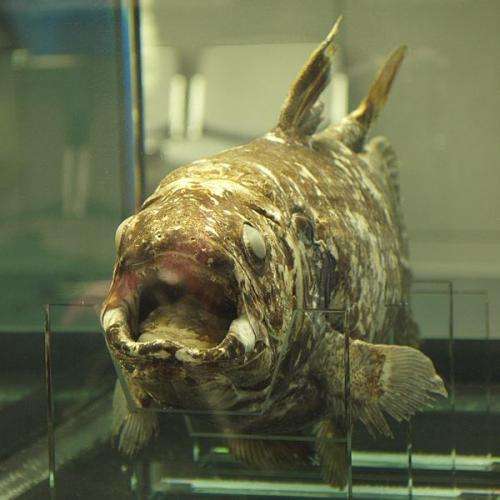May 24, 2021 report
Advent of gillnets has led to significant numbers of coelacanth captures

A trio of researchers with Resolve sarl, Ivandry Business Center, The Honorary Research Associate, South African Institute for Aquatic Biodiversity and Makhanda, and Resolve sarl, Ivandry Business Center, Antananarivo has found that due to the advent of gillnet use in the waters around Madagascar, incidences of coelacanth captures have increased. In their paper published in the South African Journal of Science, Andrew Cooke, Michael Bruton and Minosoa Ravololoharinjara describe their study of records describing coelacanth captures and what it showed them about the vulnerability of the fish.
Coelacanths are large fish that have three-lobed tails and eight fins, several of which resemble limbs—they also have a non-functional lung. Prior research has suggested that they are related to land-dwelling animals. Coelacanths were once thought to be extinct, but in 1938, one was caught by a fisherman off the coast of South Africa, leading some to refer to them as living fossils. Since the time of the first capture, several more have been captured off the coast of Tanzania and Indonesia as well as off the coast of South Africa. In this new effort, the researchers have found that many of them have also been captured off the coast of Madagascar.
The work involved studying catch records made by fishermen, most of whom were using a type of gillnet known as jarifa—they are used to capture sharks in deep water. The nets are placed vertically in the water down to depths of 300 meters in underwater canyons—the same places where coelacanths live. The researchers found far more recorded captures than they were expecting—34 between the years 1987 and 2019, enough to suggest that as many of 100 of them may have actually been captured over the past several decades. They note that the increase in captures came during the time when fishermen began using jarifa in response to an increase in demand for shark fins in China. The large number of captures around Madagascar suggest it is the epicenter of coelacanths captures. They also note that such high numbers indicate that coelacanths might be in danger, and because of that, conservation measures should be put in place.
More information: Andrew Cooke et al, Coelacanth discoveries in Madagascar, with recommendations on research and conservation, South African Journal of Science (2021). DOI: 10.17159/sajs.2021/8541
© 2021 Science X Network




















